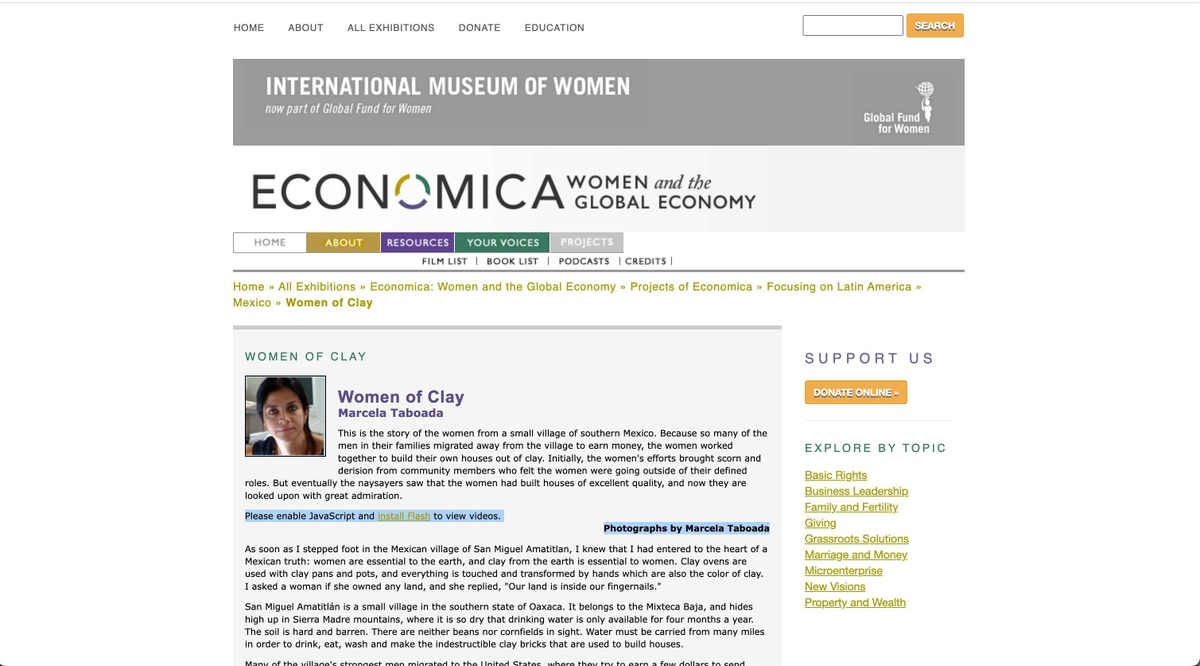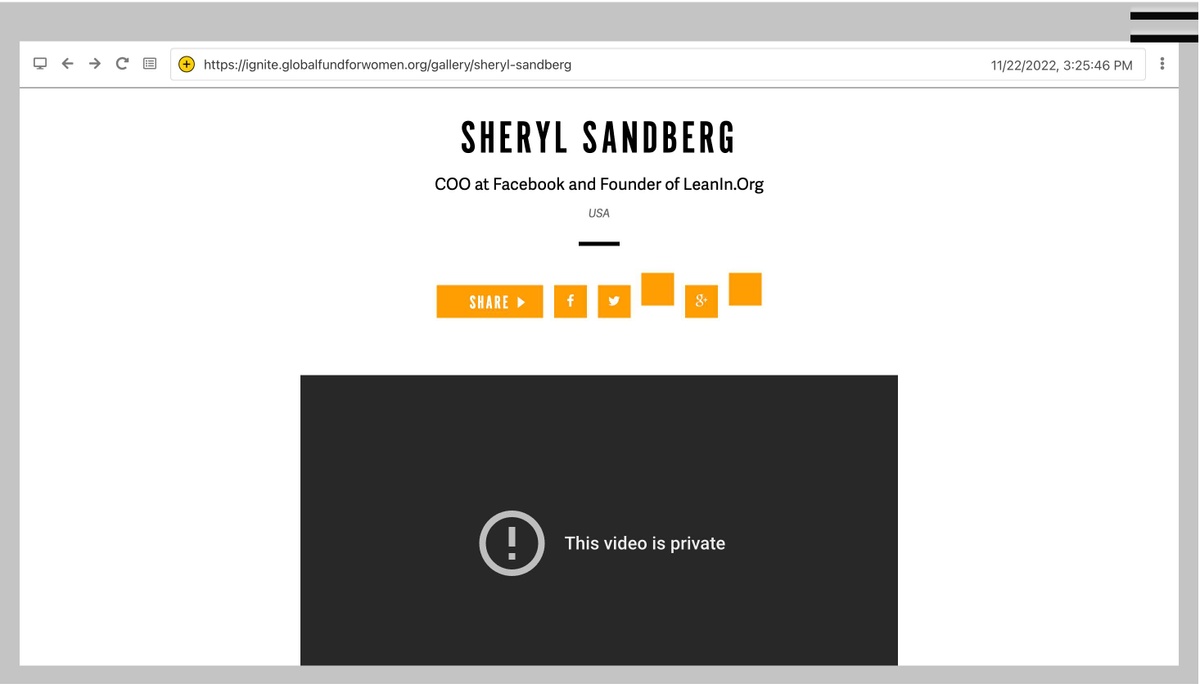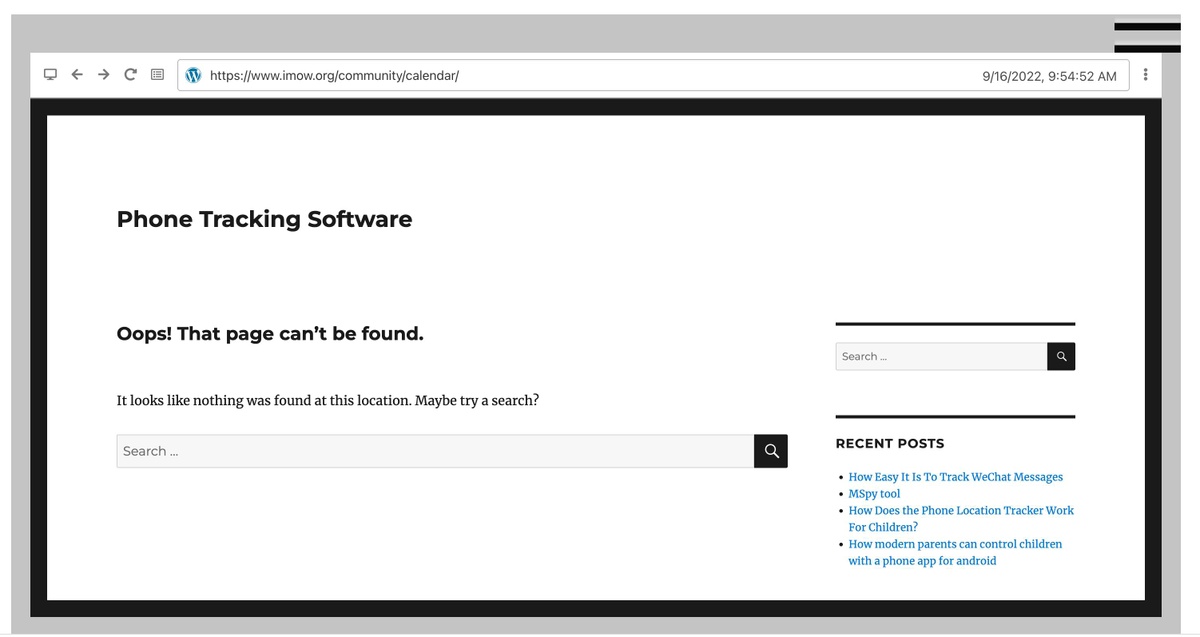Preserving the International Museum of Women
Marie Williams Chant Aug 22, 2023 4 Minute Read
Our previous blog post highlighted the history of IMOW and its multiple digital exhibition initiatives. In this project feature, we’ll discuss our approach to capturing this born-digital resource and considerations to take when preserving digital projects that have reached obsolescence.
How do you preserve a digital museum?
IMOW’s paper records live at San José State University, and based on their documentation, we knew what was available to researchers through their reading room. This knowledge helped inform the scope of our project and what would enhance the materials they hold. To develop a preservation strategy for the IMOW digital exhibitions, we needed to assess the significant properties of each site. In digital preservation, significant properties are aspects of a digital object that need to be preserved over time to ensure continued accessibility, usability, and meaning. In a perfect world, it would be possible to preserve physical and digital materials in perpetuity in their original format with all significant properties intact; the reality is that multiple factors determine what and how materials are preserved, not limited to available funding, resources, and limitations on preservation tools.
In considering the significant properties of the IMOW digital exhibitions, we evaluated each site as a complex digital object, as each exhibition combines many digital objects to create one curated experience and depends on multiple factors to function as intended. We spent considerable time poring over each digital exhibition and noting what elements were still functional as published, which sites contained depreciated components, and what steps we could take to preserve the original curatorial intent.
Our primary overarching strategy was to capture the websites using Webrecorder’s Browsertrix Crawler, a simplified browser-based high-fidelity web crawling system, to archive each website and enable us to feature the digital exhibitions in our digital archive. Each crawl created a Web Archive Collection Zipped (WACZ) file, a new format developed by Webrecorder that simplifies creating and hosting web archives. In addition, we also retain copies of each digital exhibition as a WARC file, a standard container format for storing web content in its original context. We captured each exhibition multiple times, with rounds of quality control in between. These quality control sessions allowed us to work with our colleagues at Global Fund for Women to ensure that we captured the exhibitions to their specifications and could work together to fix fundamental issues that would hamper the preservation process.
Screencast of Browsertrix Crawler capturing webpages from Imagining Equality.
However, capturing the digital exhibitions using Browsertrix Crawler would only partially preserve their significant properties because a large amount of exhibition content was created in Adobe Flash, as was the standard when IMOW produced the earliest digital exhibitions. Adobe sunsetted its Flash plug-in at the end of 2020, leaving audiovisual content from pre-2010 IMOW digital exhibitions unrenderable on the websites. We saw that the content was still present in the page sources in Flash formats, including Flash video (.flv or .f4v) and Small Web Format (.swf). Still, users could not access the content due to the obsolescence of the file type and the media player built into these pages. We scraped this unrenderable content off the websites, inventoried the files, which included podcasts, exhibition videos, and picture carousels, and developed a script to migrate the files to a stable file format. Some of these files are available now in our archive.

Marcela Taboada’s Flash-based photo gallery recovered from Economica: Focusing on Latin America.
The digital exhibitions IMOW developed post-2010 used YouTube to embed video content within each website. The primary issue we encountered is that user-submitted and IMOW-developed content went private, making it unavailable for exhibition visitors. In addition, IMOW embedded content from social media sites as exhibition components; for example, IMOW embedded user-generated exhibition content from the defunct social media platform Storify. While embedding directly from other content-driven social media sites is a great benefit, it can present some challenging issues when considering preservation. As other social media platforms begin to degrade or evolve, websites that host this embedded content may lose contextual information as users elect to leave platforms, delete content, or developers shift platform functionality, leaving broken content in the wake.

Some issues were insurmountable but reflected broader issues people encounter when preserving digital content. Each IMOW digital exhibition featured links to external resources that helped enhance the curatorial theme. As we worked on the preservation project, we determined that many of these resources didn’t lead anywhere, leaving the exhibitions suffering from significant link rot. In some places, the link rot existed for internal links as the domain wasn’t changed from “imow.org” to “globalfundforwomen.org” when the sites were migrated.

The preservation process is ongoing as we go through exhibition content that we downloaded and migrated from the digital exhibitions. We hope to add this content to the TFI Digital Archive over the coming year. Overall, this wonderful collaboration ensured the preservation of an important feminist digital initiative, and we are proud to provide access to the IMOW digital exhibitions on our website.
Know of a feminist digital initiative in need of preservation? Email us at partnerships@thefeministinstitute.org.

